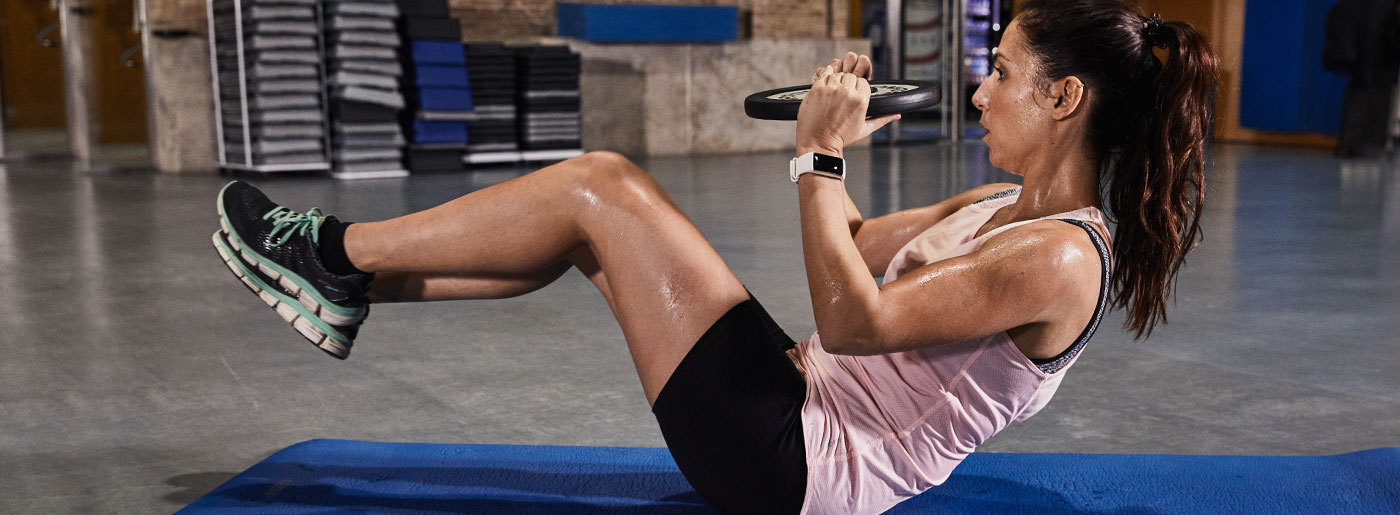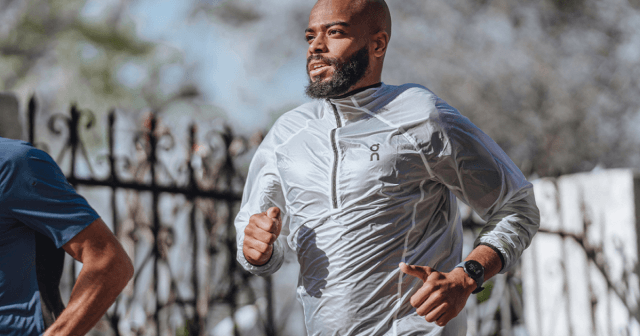We’ve all probably read it or heard it several times that core workouts for runners help to improve running performance.
So, we kind of know that core is key, but do we really understand the importance? The problem is that knowing it doesn’t help, doing it would. And yet, many runners focus on running, ignoring the research suggesting that to become a better runner, you need to do more than run.
Perhaps the most common reason many runners skip core work is lack of time and we know just how frustrating it can be to try and squeeze everything into your busy schedule.
To help you optimize your core workouts in the shortest amount of time, we asked for advice from Dr. Jinger Gottschall, Ph.D., a consultant, researcher and running enthusiast who has studied which exercises activate the core most effectively, maximizing functional gains and peak performance.
Here Dr. Gottschall walks us through why and how runners should work on their core.
How does a strong core make you a better runner?
Your core is, well, the core, so it affects pretty much all other parts of your body.
When you run, your legs do a lot of the heavy lifting, but in addition, your whole upper body from your shoulder to your hip is involved in the movement.
Running includes subtle twisting where your upper and lower body are moving in different planes. This twisting movement comes from your midsection, your core.
That’s why runners should focus on exercises that strengthen the core to optimally support – not only the primary movement forward – but also the secondary twisting movements, which help to improve running speed and running economy.
These are the specific areas in running a strong core can help with:
1. Improve running economy
This means that you can run at a specific speed at a lower cost, using less energy and less oxygen.
Improving your running economy means that your heart and lungs work together more effectively so you’re able to work at a lower intensity for a specific speed for a longer duration.
2. Reduce injuries
Even though running involves your upper and lower body moving in different planes, running is primarily in one plane, moving forward and joints are flexing and extending.
Runners have weaknesses laterally on the outside muscles.
That’s why runners have weaknesses laterally on the outside muscles, which can cause difficulty with knee tracking and pain at the outside of the hip. Doing core workouts will strengthen these lateral muscles and assist with limiting injury.
Strengthening your core can also help to reduce the impact of constant pounding on the ground. If you’re braced every time you hit the ground, you’re absorbing some of the impact. A strong core will soften the hit and is, therefore, a vital piece in reducing injury.
3. Run faster
Previous data demonstrates that a strong core helps you run faster, but the reasons why and how are not conclusive – yet.
Better symmetry and a correct running form are key in increasing running speed.
Perhaps core exercises make you more symmetrical and, thus, improve your running form. In that respect, a strong core helps you run faster because better symmetry and a correct running form are key in increasing running speed.
What are the best core workouts for runners?
The core has three different dimensions (front, side and back) so there’s more to it than just abs. When planning your core training you should aim to target all three areas of your core.
An integrated core routine that incorporates the activation of distal trunk musculature would be optimal for runners.
In our study on effective core exercises, we concluded that an integrated core routine that incorporates the activation of distal trunk musculature would be optimal for maximizing strength, improving endurance, enhancing stability, reducing injury, and maintaining mobility.
However, isolated core exercises for runners can work, too – as long as you know which areas of your core different exercises target.
Isolated core exercises
If you do isolated core exercises that target only one of the areas (front, back or side), optimally you would do a mix of different exercises.
Here are three examples of isolated core exercises for runners that you can combine to get a workout for all three dimensions of your core.
- A basic crunch is an isolated exercise for your front or anterior core.
- A crunch where you cross one shoulder over to the opposite knee targets your side or obliques.
- Lying on your stomach, pulling up your shoulders and your legs in an extension, is an isolation exercise for the back or posterior core.
Integrated core exercises
With integrated core exercises you’ll get activity in all three areas at the same time.
Examples of integrated core exercises for runners are:
- A plank is where your shoulders are stacked over your wrists and you’re either on your knees or toes.
- A hover is a low version of the plank with your shoulders stacked above your elbows and your forearms down on the ground.
Both of these exercises are three-dimensional, meaning you’re getting activity from the front side and back at the same time and in addition, you get activity from the shoulder and hip, which also affect overall trunk strength and stability.
You can make these integrated exercises easier (put your knees on the floor) or harder by adding the element of balance (lift one leg or arm up). Or, put yourself to the ultimate test and try the most advanced version (lift one arm and the opposite side leg up at the same time).
How long should your core workout be?
To my knowledge, there aren’t studies to demonstrate the absolute minimum time for effective core workout for runners. That’s not to say that short 5-or-10 minute core workouts wouldn’t count for anything, only that there isn’t research-based evidence to prove that at the moment.
Research suggests that one 30-minute strength training session per week is enough to increase maximal running performance.
So far, 30 minutes is the minimum workout duration used in studies on benefits of strength training for runners. But, this research does suggest that to increase maximal running performance, one 30-minute strength training session per week is enough.
What is the optimal short core workout for runners?
The plank and hover (with varying levels of difficulty) are strong integrated movements that are ideal for a short core workout for runners. With these exercises, you’ll get activity in all three areas at one time.
One common weakness among runners is the outside of the hip and deep into the glutes. Weakness in this area leads to lateral hip pain and knee issues so it’s helpful for runners to do some integrated exercises that strengthen the outside of the hip and the back of the hip, such as:
- Lift and extend one leg when you’re in a hover and float the leg away from the body and and back in.
- Put a resistance band around your legs in a standing position and pull one leg away from the other.
These are great exercises to target the lateral and deep hip and these are the ones I’d suggest to runners who only have time for a short core workout and want to choose the most optimal movements.
In conclusion: one core workout a week is enough
Even though research doesn’t explicitly define the minimum amount of time for an effective core workout for runners, doing something is better than doing nothing.
If you only have a few minutes, focus on quality and opt for integrated core exercises that strengthen the front, back and side of your core at the same time. That way you can make the most of the little time you have.
If you can spare 30 minutes a week for your core workout, that’s enough! Research suggests that one 30-minute strength session a week produces the same results as two. So, instead of increasing frequency, you can invest in duration and intensity of your core workouts.
Now, it’s time to test it for real and integrate core exercises into your training plan. Do your own core workout, try integrated core workouts in a group, do whatever best works for you, but do it!
If you liked this post, don’t forget to share so that others can find it, too.
Or give it a thumbs up!
I like this article
Please note that the information provided in the Polar Blog articles cannot replace individual advice from health professionals. Please consult your physician before starting a new fitness program.






